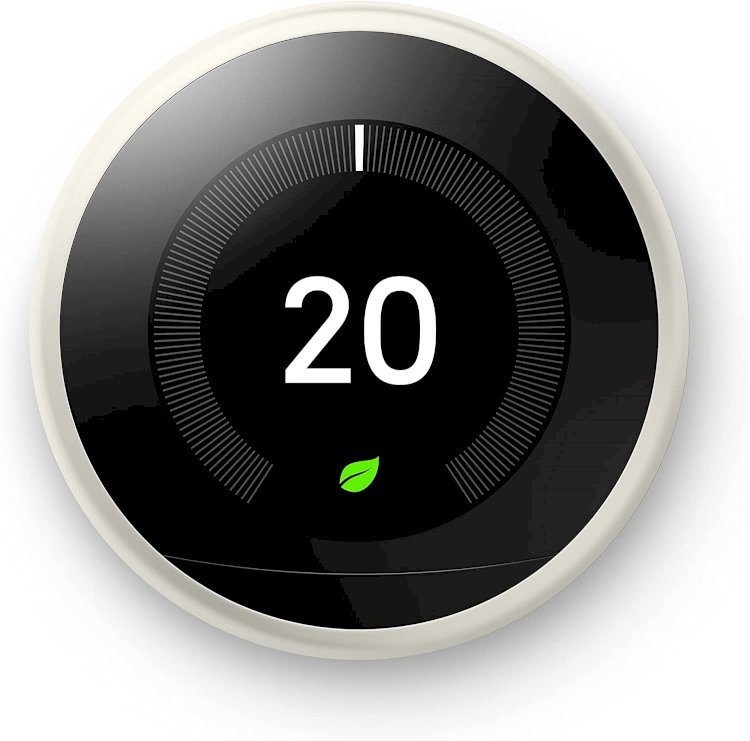Europe Smart Thermostat Market Size to Boom at Robust CAGR of 17.4% During 2023–2029
BlueWeave Consulting, a leading strategic consulting and market research firm, in its recent study, expects Europe smart thermostat market size to grow at an impressive CAGR of 17.4% during the forecast period between 2023 and 2029.

BlueWeave Consulting, a leading strategic consulting and market research firm, in its recent study, expects Europe smart thermostat market size to grow at an impressive CAGR of 17.4% during the forecast period between 2023 and 2029. Technology advancements, rising urbanization, rising demand for connected or smart homes, rising demand for energy-efficient devices, and the availability of reconfigurable and programmable thermostats are some of the factors propelling the growth of Europe smart thermostat market during the forecast period. On the other hand, incorrect triggering of switches by sensors and incongruity issues in wireless networks are anticipated to restrain the growth of Europe smart thermostat market during the forecast period. However, demand for self-learning automated devices is expected to create significant growth opportunities for the smart thermostat market.
Europe Smart Thermostat Market – Overview
An element of a control system that monitors and manages an area's temperature is a smart thermostat. It is an automated system that can remotely turn on and off a room's heating using the internet. Smart thermostats can be programmed and controlled using a variety of mobile devices, including computers, smartphones, and remote controls. To control the user's behavior and show how much heating is being used, they can observe or learn about the user's daily routine.
Sample Request @ https://www.blueweaveconsulting.com/report/europe-smart-thermostat-market/report-sample
Growth Drivers
Rising Interest in Smart Buildings and Smart City Projects
Society is becoming more urbanized, with an emphasis on smart cities, where linked technologies and Internet of Things (loT) solutions are used to improve key infrastructure, public safety, city lighting, energy efficiency, traffic flow, and traffic congestion. The goal is to improve urban living, working, and recreational environments while simultaneously lowering cities' carbon footprints. A smart city must use technology to promote long-term growth to live up to its name. Technology must improve resource efficiency while also encouraging responsible decision-making by the public and government. The component includes city-owned buildings and businesses, as well as institutions of higher learning, medical facilities, charities, and private citizens.
Challenge:
High Installation and Maintenance Costs for Smart Thermostats
To modernize control systems and develop cutting-edge smart thermostats, significant investments are required. As a result, small and medium-sized businesses (SMEs) find it difficult to enter the market for smart thermostats. During the forecast period, the HVAC industry is expected to grow rapidly. HVAC systems linked to smart thermostats necessitate fine-tuning and specific part fabrication during installation for optimal operation and failure elimination. As a result, smart thermostats linked to HVAC equipment must be installed by trained professionals. If the installation is not done by a qualified professional, the end user may end up paying more for repairs in the long run, or the HVAC systems may not work properly. The need for qualified personnel as a result drives up the price of system installation.
Impact of COVID-19 on Europe Smart Thermostat Market
The COVID-19 pandemic led to a significant increase in tech product purchases among homeowners. Despite the financial effects of the global pandemic, consumer spending on smart homes is anticipated to rise in 2023. People's perceptions of how they interact and live in their homes have changed as a result of COVID-19 pandemic-related orders to stay at home. People are changing how they use their physical space to accommodate new functional requirements, such as working and studying from home, setting up at-home gyms, or learning novel ways to unwind and have fun. Stay-at-home people rely on automated systems, connected homes, and new technologies. Therefore, it is expected that the smart home revolution will increase demand for smart thermostats during the COVID-19 pandemic.
Europe Smart Thermostat Market – By Installation
Europe smart thermostat market is divided into two segments based on installation: new installation and retrofit installation. The new installation segment is expected to grow at a higher CAGR during the forecasted period. Rapid infrastructure development, a greater emphasis on developing energy-efficient HVAC systems, and a greater emphasis on developing energy-efficient HVAC systems are propelling the smart thermostat market for new installation. The widespread use of smart thermostats in new buildings is the result of various government regulations requiring the installation of energy-efficient HVAC systems and controls. As a result of these factors, the new installation segment has experienced increased growth.
Competitive Landscape
Europe smart thermostat market is fiercely competitive. Prominent players include Siemens, Tado, Bosch Thermotechnology, Centrica Hive, Eve Systems, Salus Controls, Emerson, Honeywell, Johnson Controls, Nortex, Inc., Schneider Electric SE, Carrier Corporation, and Hive. companies use various strategies, including increasing investments in their R&D activities, mergers, and acquisitions, joint ventures, collaborations, licensing agreements, and new product and service releases to further strengthen their position in Europe smart thermostat market.
Contact Us:
BlueWeave Research Blog
Phone No: +1 866 658 6826
Email: info@blueweaveconsulting.com




























